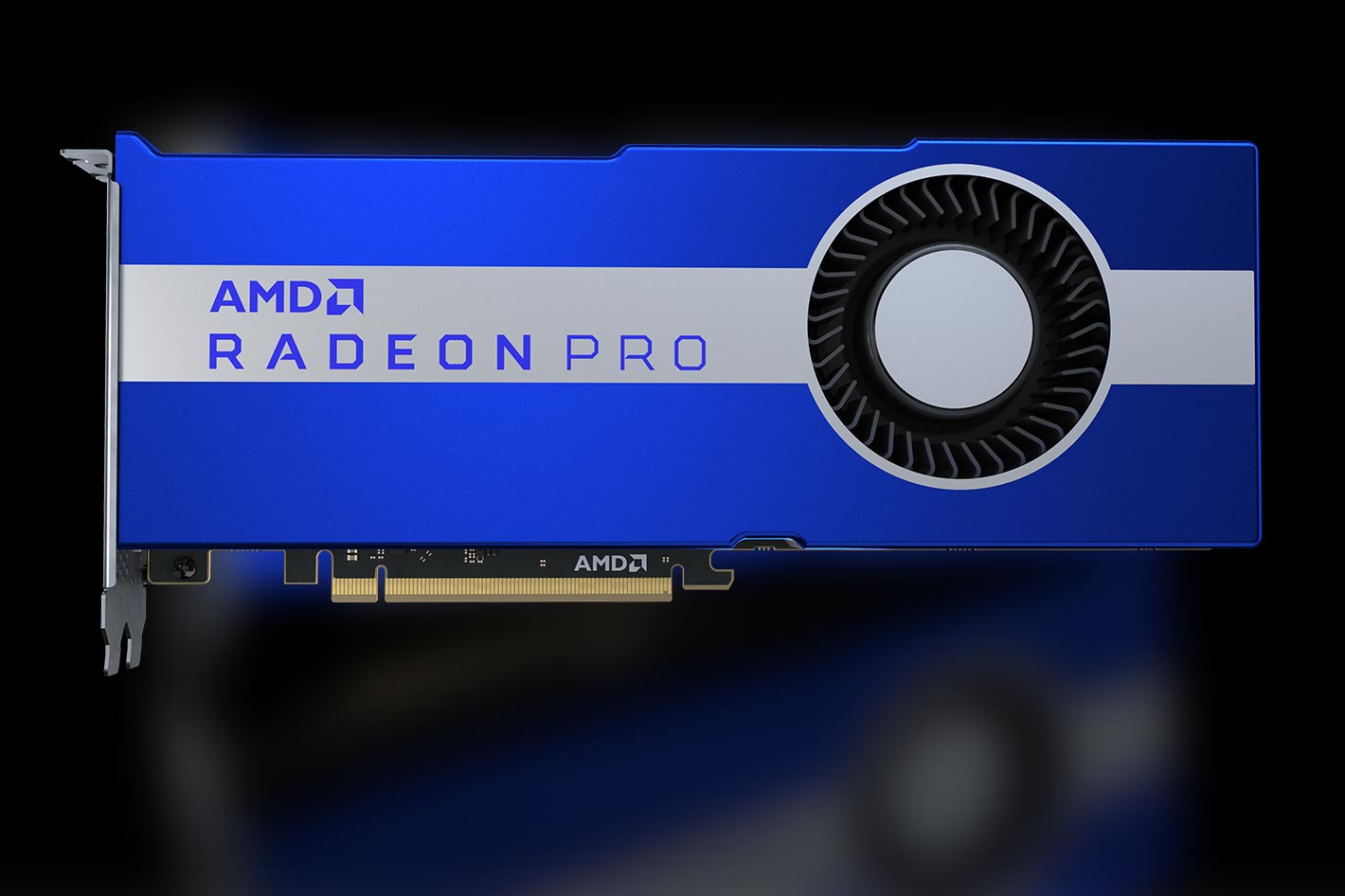
The new AMD Radeon Pro VII delivers up to 26 percent higher performance in Blackmagic Design DaVinci Resolve than the competition and is optimized to power demanding broadcast workloads.
Announced as the new standard for crushing 8K broadcast content and complex CAE simulation workloads, without crushing the budget, the AMD Radeon Pro VII is designed, says AMD, to deal with today’s broadcast and media bottlenecks, and presented as the new GPU standard for UHD projects. Here is the information the company made available about the new solution, which will, again, give users better and more options in terms of graphics. NVIDIA, now is your turn…
AMD announced the AMD Radeon Pro VII workstation graphics card for broadcast and engineering professionals, delivering, says the company, “exceptional graphics and computational performance, as well as innovative features. The new graphics card is designed to power today’s most demanding broadcast and media projects, complex computer aided engineering (CAE) simulations and the development of high-performance computing (HPC) applications that enable scientific discovery on AMD-powered supercomputers.”
The AMD Radeon Pro VII graphics card offers 16GB of extreme speed HBM2 (High Bandwidth Memory), and support for 6x synchronized displays and high-bandwidth PCIe 4.0 interconnect technology. Providing up to 26 percent higher 8K image processing performance in Blackmagic Design DaVinci Resolve and up to 5.6x the double precision (FP64) performance-per-dollar versus the competition, the new graphics card introduces AMD Infinity Fabric Link technology to the workstation market. AMD Infinity Fabric Link speeds application data throughput by enabling high-speed GPU-to-GPU communications in multi-GPU system configurations.
For those who want the numbers, here are some notes on the tests. The DaVinci Resolve data is as follows: testing as of April 02, 2020 by AMD Performance Labs on a production test system comprised of an Intel Xeon W-2125, 32GB HBM2 RAM, Windows 10 Pro for Workstations, 64-bit, System BIOS 1.11.1, AMD Radeon Pro VII, AMD Radeon Software for Enterprise 20.Q2 Pre-release version/NVIDIA Quadro RTX, NVIDIA Quadro Optimal Driver for Enterprise (ODE) R440 U6 (442.5) using PugetBench for DaVinci ResolveStudio v. 0.6 Beta. PugetBench by Puget Systems. As always, AMD indicates that results may vary.
The second case is based on another set of data: testing as of April 29, 2020 by AMD Performance Labs on a production test system comprised of an Intel Xeon W-2125, 32GB HBM2 RAM, Windows 10 Pro for Workstations, 4096-bit, System BIOS 1.11.1, AMD Radeon Pro VII, AMD Radeon Pro Software for Enterprise 20.Q1/NVIDIA Quadro RTX, NVIDIA Quadro Optimal Driver for Enterprise (ODE) R440 U6 (442.5) using AMD Internal Benchmark for EDEM.
“Today’s professionals are challenged to meet high pressure deadlines under increasingly tight budgets while aiming to deliver world-class results,” said Scott Herkelman, corporate vice president and general manager, Graphics Business Unit at AMD. “They demand more from their graphics card, and AMD Radeon Pro VII delivers. It provides innovative, high-performance technologies that allow users to easily manage larger, more complex simulations, create and manage exceptionally high-resolution digital media and digital signage content, and develop advanced HPC applications to drive new waves of scientific discovery on large scale supercomputer deployments.”
According to AMD, key capabilities and features of the AMD Radeon Pro VII graphics card include:
- Leading Double Precision Performance – With up to 6.5 TFLOPS (FP64) of double precision performance for demanding engineering and scientific workloads, the Radeon Pro VII graphics card provides 5.6x the performance-per-dollar1 versus the competition on the AMD Internal Benchmark for Altair® EDEM “Screw Auger” viewset.
- High-speed Memory – 16GB of HBM2 with 1TB/s memory bandwidth and full ECC capability handles large and complex models and datasets smoothly with low latency.
- AMD Infinity Fabric Link – A high-bandwidth, low-latency connection that allows memory sharing between two AMD Radeon Pro VII GPUs, enabling users to increase project workload size and scale, develop more complex designs and run larger simulations to drive scientific discovery. AMD Infinity Fabric Link delivers up to 5.25x PCIe 3.0 x16 bandwidth with a communication speed of up to 168 GB/s peer-to-peer between GPUs.
- Remote Working – Users can access their physical workstation from virtually anywhere for unhindered productivity with the remote workstation IP built into AMD Radeon Pro Software for Enterprise driver4.
- High-bandwidth PCIe 4.0 Support – PCIe 4.0 delivers double the bandwidth of PCIe 3.0 to enable smooth performance for 8K, multichannel image interaction.
- Frame Lock/Genlock – Enables precise synchronized output for display walls, digital signage and other visual displays (AMD FirePro S400 synchronization module required).
- High-resolution/Multi-display Support – Supports up to 6x synchronized display panels, full HDR and 8K screen resolution (single display) combined with ultra-fast encode and decode support for enhanced multi-stream workflows.
- Professional Application Certification – Optimized and certified with leading professional applications for stability and reliability. The list of Radeon Pro Software-certified ISV applications can be found here.
- ROCm Open Ecosystem – Open software platform for accelerated compute provides an easy GPU programming model with support for OpenMP, HIP, and OpenCL, as well as support for leading machine learning and HPC frameworks, including TensorFlow, PyTorch, Kokkos, and RAJA.
